Superfund Sites in Reuse in Connecticut
If you are having trouble viewing the map in your browser, click the 'View larger map' link below
BARKHAMSTED-NEW HARTFORD LANDFILL
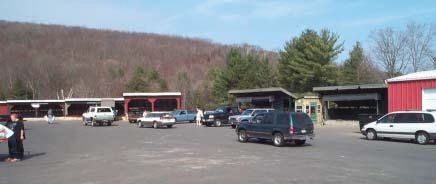
The 97.8-acre Barkhamsted-New Hartford Landfill Superfund site is in the towns of Barkhamsted and New Harford, Connecticut. Between 1974 and 1993, the land was used for municipal solid waste, industrial waste and non-processable waste disposal via landfilling. Initial groundwater contamination was identified in 1981. Subsequent investigations further identified the nature and extent of the contamination. The EPA added the site to the National Priorities List (NPL) in 1989. Remedy construction began in 1999. It consisted of a landfill cap, a runoff and leachate collection and treatment system, a gas collection system, a fence around the cap and all of its appurtenances, long-term groundwater, surface water and sediment monitoring, institutional controls to prevent contact with contaminated groundwater and damage to the cap, and performance of five-year reviews. Of the site’s 97.8 acres, about 13 acres consist of the capped landfill and appurtenances; a second part of the site is in use as a transfer station and recycling center for Regional Refuse Disposal District No. 1. A third part of the site is used as a solar farm that generates 1.5 megawatts of electricity and helps offset recycling transfer operating costs.
Last updated September 2024
As of December 2024, the EPA had data on one on-site business. This business employed 6 people and generated an estimated $327,120 in annual sales revenue. For additional information click here.
For more information:
CHESHIRE GROUND WATER CONTAMINATION
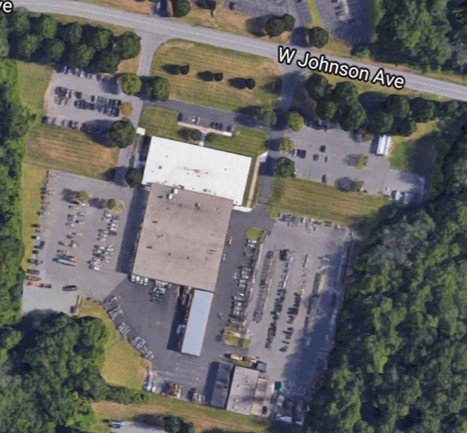
The 15-acre Cheshire Ground Water Contamination Superfund site is in Cheshire, Connecticut. From 1966 to 1980, two companies made plastic molding on-site. Operations contaminated soil and groundwater with chemicals and solvents. In 1990, the EPA added the site to the National Priorities List (NPL). Cheshire Associates, under state and the EPA's orders, cleaned up the area by removing some contaminated soil. The EPA extended the public water supply to residents with drinking water wells affected by the contamination. Carten Controls relocated to the site in 1996. After cleanup, the EPA took the site off the NPL in 1997. Carten Controls continues to run its semiconductor parts manufacturing facility on-site.
Last updated September 2024
As of December 2024, the EPA had data on one on-site business. This business employed 19 people and generated an estimated $6,880,000 in annual sales revenue. For additional information click here.
For more information:
DURHAM MEADOWS
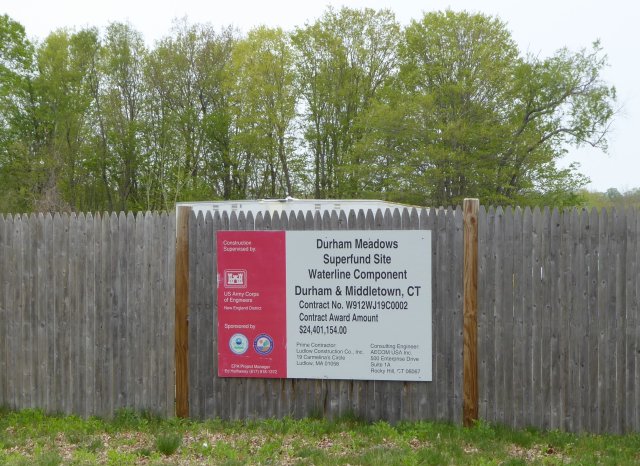
The Durham Meadows Superfund site is in Durham, Connecticut. Merriam Manufacturing Company and Durham Manufacturing Company made metal cabinets, boxes and other items on-site from 1851 to 1998. Improper storage and disposal practices contaminated soil and groundwater. In 1982, the Connecticut Department of Energy & Environmental Protection (CT DEEP) found contamination in nearby private drinking water wells. Merriam Manufacturing Company and Durham Manufacturing Company installed filters on affected residential wells. The EPA added the site to the National Priorities List (NPL) in 1989. Cleanup activities include providing an alternate water supply for affected residents, removing soil, and monitoring and containing groundwater contamination. Cleanup also includes placing restrictions on land and groundwater use and investigating areas with possible indoor air risks. Cleanup of the Merriam Manufacturing Company area of the site is now complete. The town of Durham put an area-wide groundwater use restriction ordinance in place in 2015. Plans for the alternative water supply and cleanup of the Durham Manufacturing property are complete; construction began in 2019 and the new water system was brought into service in 2022. The EPA has been working to complete punch list items since 2022 and completion of the alternative water supply cleanup is expected in 2024. The EPA, working with the US Army Corps of Engineers, expects to award a contract to perform the cleanup at the Durham Manufacturing Facility starting in late 2024 or spring 2025. The EPA also issued an Explanation of Significant Differences in July 2024 to document changes to the Technical Impracticability Zone established in the 2005 Record of Decision. In 2021, the site was among those selected by the EPA to receive cleanup funding under the Infrastructure Investment and Jobs Act. With this funding, the EPA is already initiating work on backlogged remedial construction projects and accelerating cleanups at NPL sites. CT DEEP and the EPA are working with the responsible parties and local officials to put final land and groundwater use controls in place. The Durham Manufacturing Company continues to make metal boxes on-site. Commercial and public service reuses are also on-site. The site is also home to a volunteer ambulance corps, the Durham District Board of Education, churches and many businesses.
Last updated September 2024
As of December 2024, the EPA had data on one on-site business. This business employed 99 people and generated an estimated $13,740,902 in annual sales revenue. For additional information click here.
For more information:
GALLUP'S QUARRY
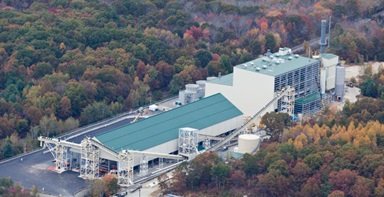
The Gallup’s Quarry Superfund site is a 29-acre abandoned gravel pit in Plainfield, Connecticut. During the 1970s, the site owner accepted chemical wastes without a permit. Disposal activities led to soil and groundwater contamination. After the Connecticut Department of Energy & Environmental Protection removed waste drums and contaminated soil, the EPA added the site to the National Priorities List (NPL) in 1989. The EPA’s cleanup plan includes monitoring of natural processes to clean up groundwater and land use restrictions. Long-term soil, sediment and groundwater monitoring are ongoing. Today, the Plainfield Renewable Energy biomass facility is on-site. The facility became fully operational in 2014. The 37.5-megawatt power plant uses waste wood to generate enough electricity to power the equivalent of about 40,000 homes in Plainfield. Connecticut Light & Power purchases 80% of the generated energy under a 15-year agreement with the facility owner. The remaining energy contributes to the regional renewable energy certificate market. Greenleaf Power bought the plant in 2015 and is now in charge of plant operations. There are also several surface water bodies in or near the site, including Mill Brook, Fry Brook and Packers Pond.
Last updated September 2024
As of December 2024, the EPA had data on one on-site business. This business employed 3 people and generated an estimated $12,031,000 in annual sales revenue. For additional information click here.
For more information:
HIGGANUM COVE

The 13-acre Higganum Cove site is located off Nosal Road in Haddam, Connecticut. From the 1840s until 1983, various manufacturing operations took place on site. These included dyeing of fabrics and yarn and the production of bridge netting, marine paints and carbonless copy paper. Following reports of inappropriate handling of hazardous substances, the Connecticut Department of Energy & Environmental Protection (CT DEEP) performed site inspections from 1983 to 1989. The inspections found site soils and wetlands contaminated with industrial solvents, metals and polychlorinated biphenyls. In 2013, CT DEEP referred the site to the EPA for a removal evaluation. After the EPA identified the need for a removal action in 2014, the EPA began emergency cleanup actions at CT DEEP’s request. These actions included excavation and disposal of contaminated soils and wetlands restoration. The EPA completed cleanup in late 2015. The cleanup actions facilitated reuse at the site. Through collaboration between EPA, CT DEEP and local officials, the site is now home to a nature park. The park includes hiking trails, picnic tables, a kayak launch and restored wetlands for the public’s enjoyment.
Last updated September 2024
As of December 2024, the EPA did not have economic data related to on-site businesses, or economic data were not applicable due to site use. For additional information click here.
For more information:
KELLOGG-DEERING WELL FIELD

The Kellogg-Deering Well Field Superfund site is in Norwalk, Connecticut. It consists of a 10-acre municipal well field and the adjacent upland area that contributed to well field contamination. The city of Norwalk has operated up to five municipal water supply wells on the well field portion of the site. During routine sampling in 1975, the city found high levels of trichloroethylene (TCE) at the well field. The city shut down wells with unacceptable levels of TCE. Inspections by the Connecticut Department of Energy & Environmental Protection from 1975 to 1980 found several hazardous chemicals in groundwater and soils. The EPA added the site to the National Priorities List (NPL) in September 1984. Cleanup included installation of a wellhead treatment facility to allow continued use of the well field, soil vapor treatment, groundwater extraction and treatment, and institutional controls. Routine maintenance and monitoring activities are ongoing. A supplemental investigation found the primary source of contamination, about a half-mile east of the well field along Main Avenue. Cleanup of source area soils and groundwater began in 1996. Soils met cleanup goals in 2006. Groundwater cleanup in the source area is ongoing. The First District Water Department operates the well field. It provides water to more than 40,000 residents in Norwalk and small areas of surrounding communities. Commercial and residential uses remain on-site. Commercial uses include office space, a shopping plaza, a car wash and car repair facilities. Development plans for the source area were recently approved by the City of Norwalk for the construction of first-floor retail and restaurant space with second floor residential units, associated parking, and an electric vehicle charging station.
Last updated September 2024
As of December 2024, the EPA had data on 3 on-site businesses. These businesses employed 3 people and generated an estimated $922,500 in annual sales revenue. For additional information click here.
For more information:
LINEMASTER SWITCH CORP.
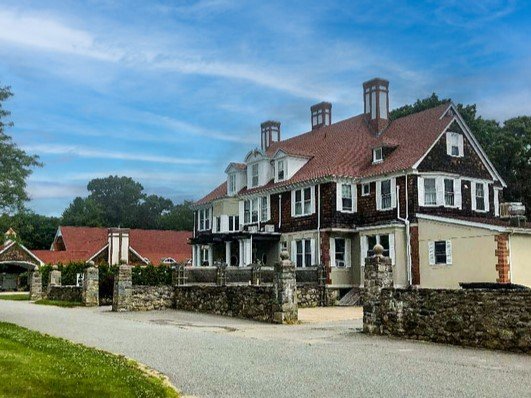
The 45-acre Linemaster Switch Corp. Superfund site is in Woodstock, Connecticut. Electrical and pneumatic foot switch and wiring harness manufacturing has occurred on-site since 1952. These operations use chemicals, paint and thinners. Past practices resulted in groundwater, sediment, surface water and soil contamination. In 1990, the EPA added the site to the National Priorities List (NPL). Cleanup activities include soil and groundwater treatment. The groundwater treatment system remains active. Today, the Linemaster Switch Corporation continues to make electrical power switches, air valves, electrical cord sets and metal nameplates at the site. The Mansion at Bald Hill, a historic landmark that is now a bed and breakfast, is also on-site. It includes a restaurant, a wedding venue and a banquet facility. Four homes, a tennis court and a pond are also on-site.
Last updated September 2024
As of December 2024, the EPA had data on 2 on-site businesses. These businesses employed 176 people and generated an estimated $41,299,670 in annual sales revenue. For additional information click here.
For more information:
MITRAL CORPORATION
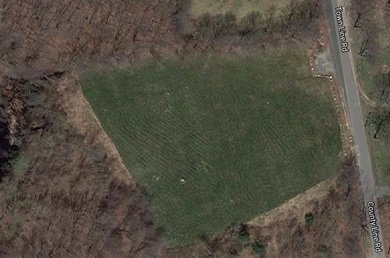
The 5-acre Mitral Corporation site is located in Harwinton, Connecticut. Between the mid-1960s and late-1980s, Mitral Corporation did metal stamping and tooling, tumbling, sanding, degreasing and other machining work on site. Waste materials included used solvents, sludge, waste oil and scrap metal. The Connecticut Department of Energy & Environmental Protection conducted inspections and subsequently referred the site to the EPA for removal evaluation. Beginning in 2007, the EPA conducted cleanup activities. The EPA removed asbestos-contaminated products, demolished an old factory building, removed sludge and storage tanks, removed and treated soil, and treated water. After the EPA completed its cleanup in 2009, the site was vacant for five years. In 2012, two residents living next to the site purchased the property. The new owners planted a few hundred evergreen trees and plan to plant additional evergreens to sell as Christmas trees. They are considering selling the trees to benefit the Fidelco Guide Dog Foundation.
Last updated September 2024
As of December 2024, the EPA did not have economic data related to on-site businesses, or economic data were not applicable due to site use. For additional information click here.
For more information:
MUKLUK PRESERVE

The 17-acre Mukluk Preserve site is a former skeet shooting range located in Sprague, Connecticut; it is part of the larger 645-acre Sprague Land Preserve. Cleanup included excavation and disposal of almost 28,000 tons of soil contaminated with lead and polyaromatic hydrocarbons. The EPA coordinated closely with Connecticut Department of Energy & Environmental Protection and the town of Sprague to restore the site. The town provided all of the plantings/saplings used for restoration. The EPA completed restoration of the site and supported its return to use as a recreation area for hiking, fishing, hunting, horseback riding, cross-country skiing, canoeing and other activities.
Last updated September 2024
As of December 2024, the EPA did not have economic data related to on-site businesses, or economic data were not applicable due to site use. For additional information click here.
For more information:
NEW LONDON SUBMARINE BASE
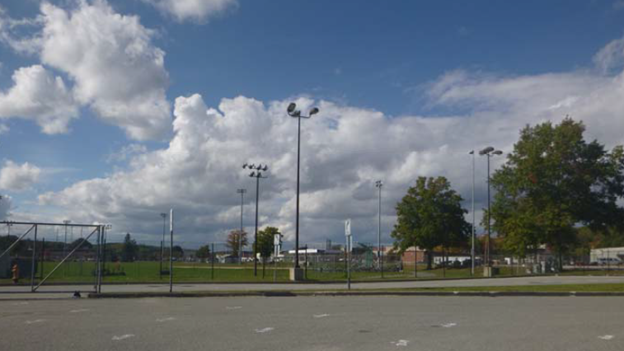
The New London Submarine Base Superfund site covers 687 acres on the eastern bank of the Thames River in Groton and Ledyard, Connecticut. The base opened in 1868. It has been an operation and support facility for submarine activities in the Atlantic Ocean since 1916. The site includes many contaminated areas, including three landfills, chemical storage sites, tank farms, water courses and groundwater. The U.S. Navy is the lead agency for investigations and cleanup. The EPA and the Connecticut Department of Energy and Environmental Protection provide oversight. Cleanup activities included capping of all three landfills, eight removal actions, and removal of contaminated soil and sediment at the area known as the Over Bank Disposal Area. Wetland restoration in this area has also been completed. Long-term cleanup and monitoring activities are ongoing. Today, the New London Submarine Base continues to train and deploy professional submariners and combat-ready submarines. In addition to the Submarine School and other military facilities, the site supports recreational, commercial, ecological and public service uses on the base. Sailors have access to a gymnasium equipped with a free weight area, a track and field, a pool and picnic area, a golf course and a bowling center. In 2022, the U.S. Navy recently completed a waterfront modernization project to build an improved, climate-resilient submarine pier. Together with the Connecticut Department of Energy and Environmental Protection, the U.S. Navy is building an electrical microgrid to protect national security and improve resilience to sea level rise and weather events. The new grid will lower energy consumption and greenhouse gas emissions at the site.
Last updated September 2024
As of December 2023, the EPA did not have economic data related to on-site businesses, or economic data were not applicable due to site use. For additional information click here.
For more information:
NUTMEG VALLEY ROAD
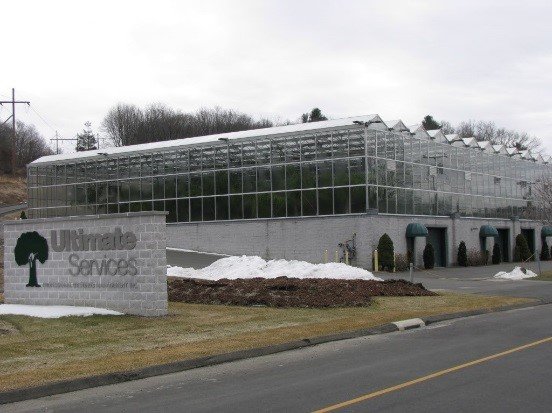
The 28-acre Nutmeg Valley Road Superfund site is in Wolcott, Connecticut. Beginning in the 1940s, metalworking and finishing shops were on-site. Two of these shops disposed of chemicals in site soils. These improper disposal practices contaminated private drinking water wells near the site. In 1989, the EPA added the site to the National Priorities List (NPL). In 1992, an emergency cleanup action addressed surface soil contamination and a potential source of groundwater contamination. After the cleanup action, groundwater studies found contaminant levels were naturally decreasing. The studies also found no evidence of widespread groundwater contamination. The EPA took the site off the NPL in 2005. Industrial, commercial and some residential uses are ongoing at the site. To further revitalize the area, the town of Wolcott made infrastructure improvements to area roads and offered visual enhancement incentives such as debris pickup and free paint for property owners. Local officials point to site improvements and its removal from the NPL as factors that led to the construction of a $2 million state-of-the-art greenhouse nearby. The town of Wolcott expects these factors to encourage more commercial and industrial development at the site. A new commercial building for Ultimate Services Professional Grounds Management is on-site.
Last updated September 2024
As of December 2024, the EPA had data on 7 on-site businesses. These businesses employed 36 people and generated an estimated $5,947,000 in annual sales revenue. For additional information click here.
For more information:
OLD SOUTHINGTON LANDFILL
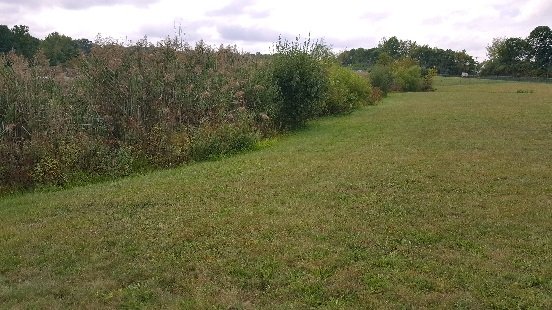
The 13-acre Old Southington Landfill Superfund site is in Southington, Connecticut. The municipal landfill was active from the early 1920s until 1967. Closure activities included compacting loose waste, covering the landfill with clean soil, and reseeding the area with grass. From 1973 to 1980, the town subdivided and sold the landfill property for residential and commercial development. Construction of several homes and commercial businesses took place at the site and nearby areas. In 1979, the Connecticut Department of Public Health found elevated levels of 1,1,1-trichloroethane (TCA) at Municipal Well #5, located 700 feet northwest of the landfill. This led to permanently closing the well and conducting further investigations that found groundwater, soil, sediment and surface water contamination at the landfill. The EPA added the site to the National Priorities List (NPL) in 1989. Cleanup activities included permanent relocation of on-site homes and businesses, landfill capping, passive soil gas collection system, disposal of semi-solid sludge materials in a lined cell beneath the cap, groundwater long-term monitoring, and land use restrictions. Land use restrictions in place at the landfill prevent damage to the cap and at two downgradient properties to keep vapors from landfill-contaminated groundwater from migrating through cracks into the buildings. The northern part of the landfill is now a park where people walk their dogs, watch wildlife and canoe in the adjacent Black Pond. The southern part of the landfill is fenced with no public access. Cleanup has finished. The EPA took the site off the NPL in 2018. Long-term groundwater monitoring and five-year reviews continue to take place to make sure the remedy remains effective and protective of human health and the environment. As part of the cleanup settlement, the U.S. Fish and Wildlife Service restores ecological habitat, including waterways and natural resource areas affected by the site. Trail maintenance work along the Quinnipiac River will allow for more recreational use.
Last updated September 2024
As of December 2024, the EPA did not have economic data related to on-site businesses, or economic data were not applicable due to site use. For additional information click here.
For more information:
RAYMARK INDUSTRIES, INC.
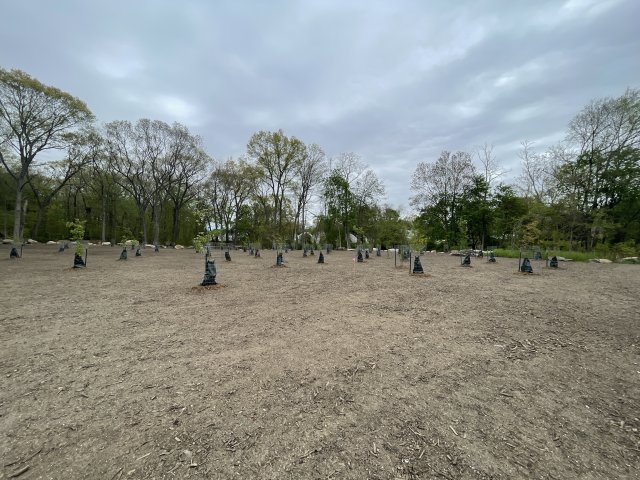
The Raymark Industries, Inc. Superfund site includes over 500 acres near the Housatonic River in Stratford, Connecticut. From 1919 to 1989, Raymark Industries made various automotive parts on a 34-acre area at the site. Disposal of manufacturing wastes took place at the former manufacturing site, on dozens of residential, commercial and municipal properties across town, and in the wetlands next to the Housatonic River. Contaminated groundwater beneath the former facility impacted nearby commercial and residential areas due to the intrusion of vapors into overlying homes and buildings. The EPA added the site to the National Priorities List (NPL) in 1995. Cleanup activities included removing contaminated soil and waste from several residential properties, capping the former manufacturing property, placing vapor mitigation systems in more than 100 homes, and temporarily covering and restricting access to other properties. People near the site do not use groundwater for drinking purposes. The EPA took reuse considerations into account as part of capping the former manufacturing property. The cap allowed for redevelopment of the property while ensuring the remedy remained protective. The EPA awarded the site a Superfund Redevelopment Program pilot grant in 2001. The Stratford Crossing Shopping Center, completed in 2005, currently occupies the site. It provides a mixed green and commercial space. The community enjoys access to several popular businesses, including Walmart, Home Depot, ShopRite Supermarket and Webster Bank. Investigation and cleanup activities on the other contaminated properties around town are ongoing. In 2015, local and federal partners, including the EPA, completed a removal action at Sikorsky Memorial Airport. The cleanup realigned Main Street, facilitating the extension of an airport runway safety zone. In 2015, the EPA and the town jointly announced a reuse plan for a former ball field. Waste from several commercial and wetland properties is being consolidated with existing waste at the former ball field and capped. This plan was documented in a Record of Decision issued by the EPA in 2016. The EPA is designing the cap so that it is compatible with a commercial or municipal building, based on the town’s needs. Cleanup of the additional contaminated properties began in 2020. Affected commercial properties include an office building, a dry cleaner, a karate studio, a liquor store, a boat yard and a pair of car dealerships. Open spaces, wetlands and public parks will be restored to their natural state. In 2021, the site was among those selected by the EPA to receive cleanup funding under the federal Infrastructure Investment and Jobs Act. With this funding, the EPA is already initiating work on backlogged remedial construction projects and accelerating cleanups at National Priorities List (NPL) sites. In 2022, the EPA committed $33 million under the law to ensure cleanup at the site. The resources will fund continued soil excavation and disposal and faster, more efficient capping of ball fields as well as stormwater management features. Reuses at excavated properties include a replanted area in Wooster Park (Quail Street) that provides a walking area for area residents with dogs and replacing and raising a fishing dock at Beacon Point to avoid flooding. Planning is underway for several new developments at the site. After the cleanup of a once-overgrown, vacant 3-acre lot, the EPA left the area as open space with a buffer of trees along an adjacent neighborhood. The property is now for sale; several developers are interested in the lot for commercial use. Cleanup is underway at another 1-acre property along Lockwood Avenue. The cleanup includes wetland mitigation and raising the property’s elevation by a foot to improve coastal resiliency. Future plans for the property include commercial use. Cleanup of the 4-acre Morgan Francis property includes consolidation and capping of waste. The cap was designed to be compatible with a recreation complex centered around an artificial turf soccer field. Capping of the property is expected to begin in 2025. Before the discovery of contamination in the late 1980s, an 8-acre property, referred to as the Consolidation Area, was home to the Brakettes women’s softball team. About 150,000 cubic yards of waste were buried on the property. Cleanup is underway. The remedy includes consolidation and capping of the waste. Part of the cap will be able to support a building and a parking pad. The town owns the property and is marketing it for commercial use. In addition, planning is underway to extend a new connector road through the area. This road will improve local access and help foster reuse interest.
Last updated September 2024
As of December 2024, the EPA had data on 23 on-site businesses. These businesses employed 1,048 people and generated an estimated $268,597,428 in annual sales revenue. For additional information click here.
For more information:
- Site Redevelopment Profile: Raymark Industries, Inc. Superfund Site (PDF)
- Reuse and the Benefit to Community: Raymark Industries, Inc. Superfund Site (PDF)
- Reuse Fact Sheet: Raymark Industries, Inc. (PDF)
- Superfund Site Profile Page
REVERE TEXTILE PRINTS CORP.

The 15-acre Revere Textile Prints Corp. Superfund site is in Sterling, Connecticut. Starting in 1972, a textile processing facility was on-site. Facility operations and storage practices contaminated soil and groundwater. In 1978, a fire destroyed the facility. Drums found in the ruins of the fire leaked heavy metals onto the ground. The EPA added the site to the National Priorities List (NPL) in July 1987. In 1983, the town of Sterling removed over 1,500 drums containing heavy metals and removed six more drums in 1990. Land restrictions were put in place. The EPA took the site off the NPL in September 1994. A memorial park was built on-site.
Last updated September 2024
As of December 2024, the EPA did not have economic data related to on-site businesses, or economic data were not applicable due to site use. For additional information click here.
For more information:
SCOVILL INDUSTRIAL LANDFILL

The 25-acre Scovill Industrial Landfill Superfund site is in Waterbury, Connecticut. From 1919 until the mid-1970s, the Scovill Manufacturing Company used the area as a landfill. By the mid-1990s, developers had built condominiums, apartment buildings, small commercial buildings and a shopping mall on the 18-acre southern part of the site. The northern part of the site is an undeveloped 6.8-acre parcel known as the Calabrese parcel. In 1988, residential development at the Calabrese parcel uncovered industrial wastes. The Connecticut Department of Energy & Environmental Protection (CT DEEP) issued a stop-work order and removed 2,300 tons of PCB-contaminated soil along with 18 capacitors from the Calabrese parcel. CT DEEP then placed a temporary soil cap over the area and fenced it. The EPA added the site to the National Priorities List (NPL) in 2000. Studies followed to determine the nature and extent of contamination at the site as well as potential risks to human health and the environment. The EPA selected the site’s long-term remedy in 2013 and updated it in 2016. It consists of excavation of contaminated soils and consolidation of contaminated soil under a 2-foot thick, 1.4-acre soil cap on the Calabrese property. Excavated soils exceeding state criteria will be excavated down to the water table and taken off-site for disposal at an approved licensed facility. Excavated areas will be backfilled with clean fill and restored to their original state (i.e., pavement or vegetation). An active vapor collection system installed under one of the commercial buildings by the property owner prevents potential future risk to those residents. Wetland areas affected by cap construction at the Calabrese property will be restored and replicated as appropriate. Institutional controls will also be implemented across the site to prevent contact with contaminated soils and damage to the cap. In 2021, the site was among those selected by the EPA to receive cleanup funding under the Infrastructure Investment and Jobs Act. With this funding, the EPA is already initiating work on backlogged remedial construction projects and accelerating cleanups at NPL sites. The EPA selected the cleanup contractor in 2023 and mobilized to initiate implementation of the remedy in spring 2024, with a target completion date of 2025.
Last updated September 2024
As of December 2024, the EPA had data on 18 on-site businesses. These businesses employed 75 people and generated an estimated $13,560,430 in annual sales revenue. For additional information click here.
For more information:
SOLVENTS RECOVERY SERVICE OF NEW ENGLAND

The Solvents Recovery Service of New England Superfund site is in Southington, Connecticut. It includes a 4-acre former operations area and a 42-acre groundwater contamination plume. From 1955 to 1991, a hazardous waste treatment and storage facility was active at the site. During operations, releases occurred on-site and operators stored process wastes in unlined lagoons. These practices resulted in soil and groundwater contamination. In 1979, the town of Southington found contamination in two public water supply wells downgradient of the site, resulting in the closure of these wells. The EPA added the site to the National Priorities List (NPL) in 1983. The EPA led short-term cleanup activities to remove 19 drums of contaminated materials. Cleanup activities also include treating groundwater, consolidating and capping contaminated soil, treating soil, and monitoring and restricting groundwater and land use. Cleanup finished in 2017 and long-term monitoring and maintenance activities are ongoing. The U.S. Fish and Wildlife Service used funds from potentially responsible parties to restore ecological habitat, including waterways and natural resources affected by past activities at the site. In September 2017, construction work finished for a new section of the nearly 80-mile-long Farmington Canal Heritage Trail that traverses the site, accompanied by a parking lot for trail users. A 50-kilowatt solar array was also built onsite to provide power for the long-term operation of the groundwater extraction system.
Last updated September 2024
As of December 2024, the EPA did not have economic data related to on-site businesses, or economic data were not applicable due to site use. For additional information click here.
For more information:
- Recreational and Ecological Use at Superfund Sites Story Map
- Site Redevelopment Profile: Solvents Recovery Service of New England Superfund Site (PDF)
- Superfund Site Profile Page
